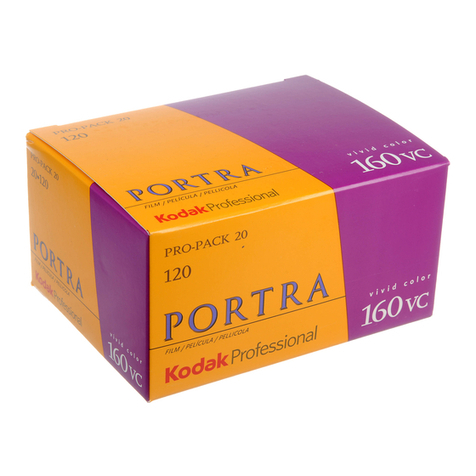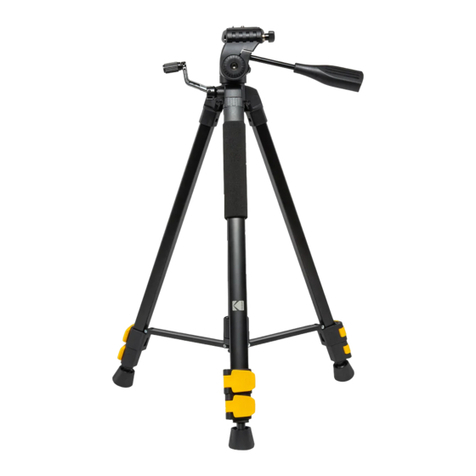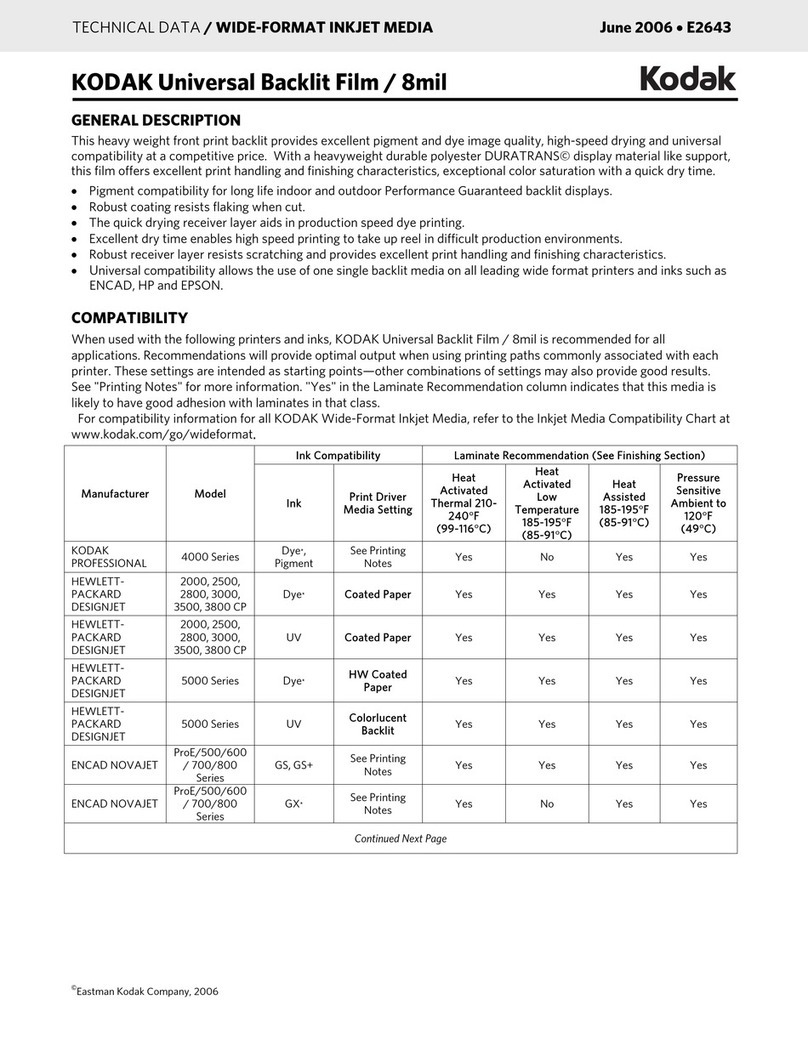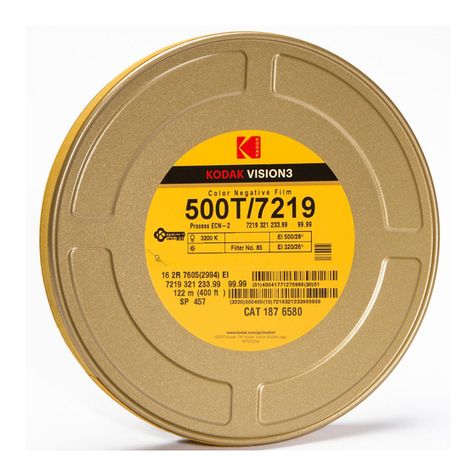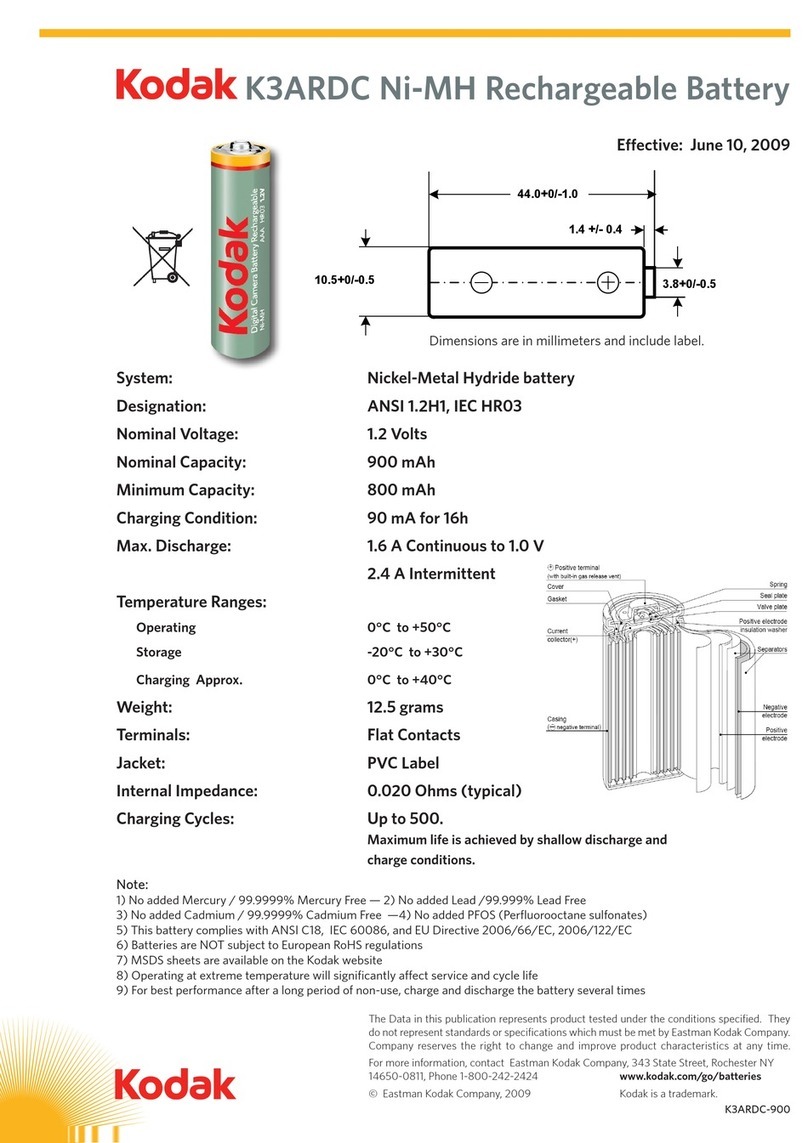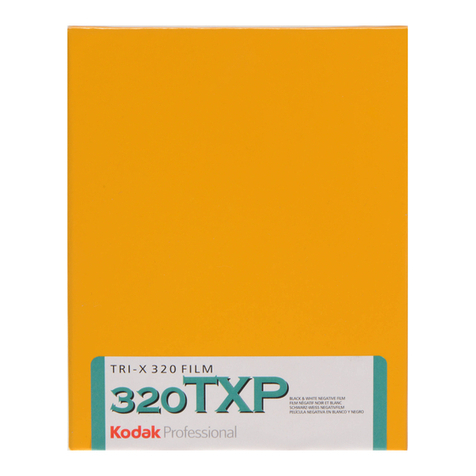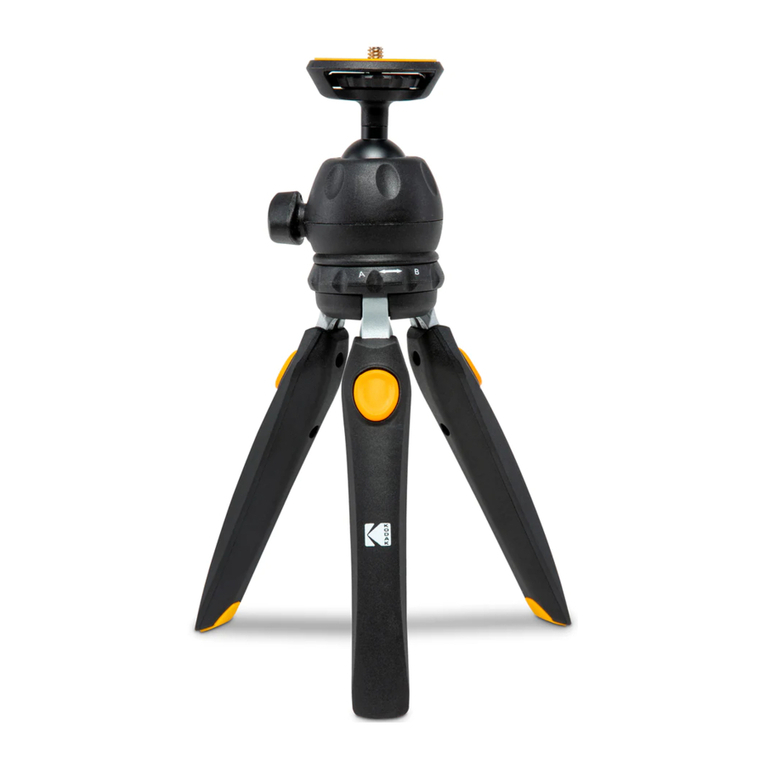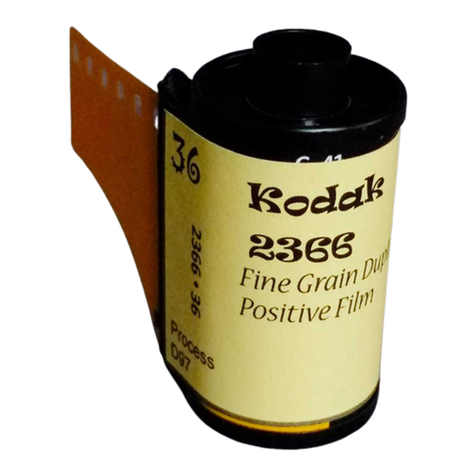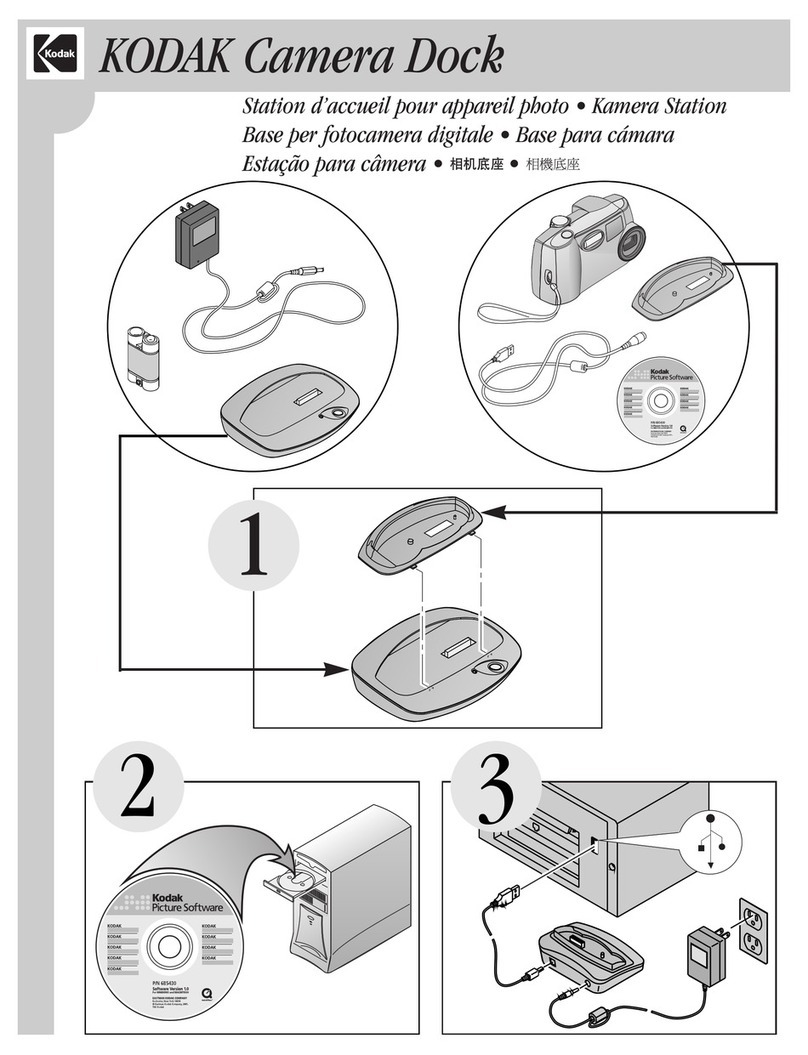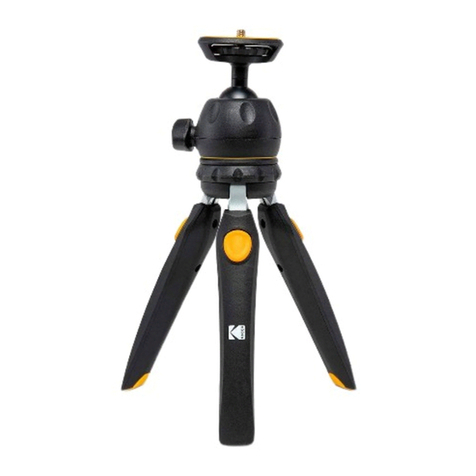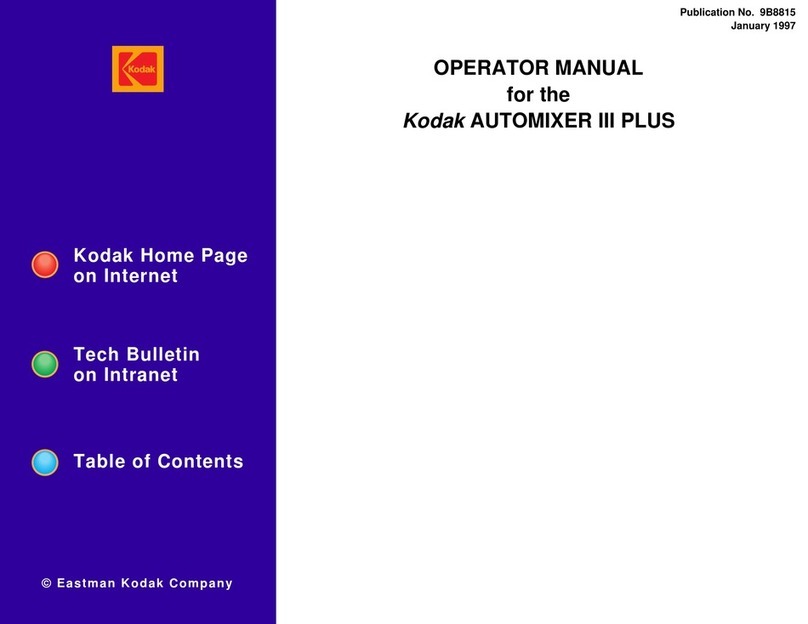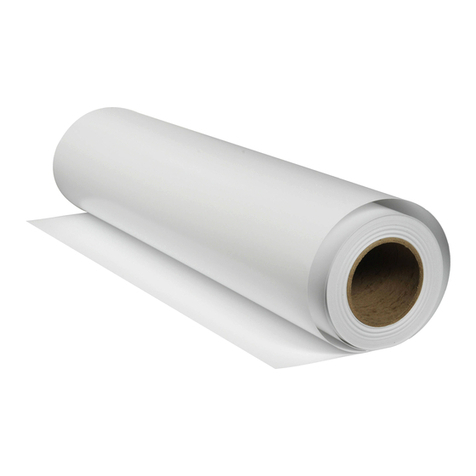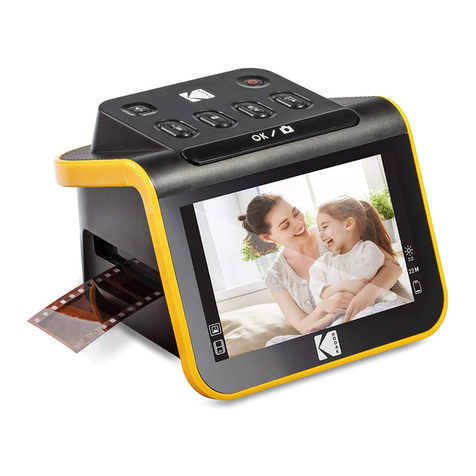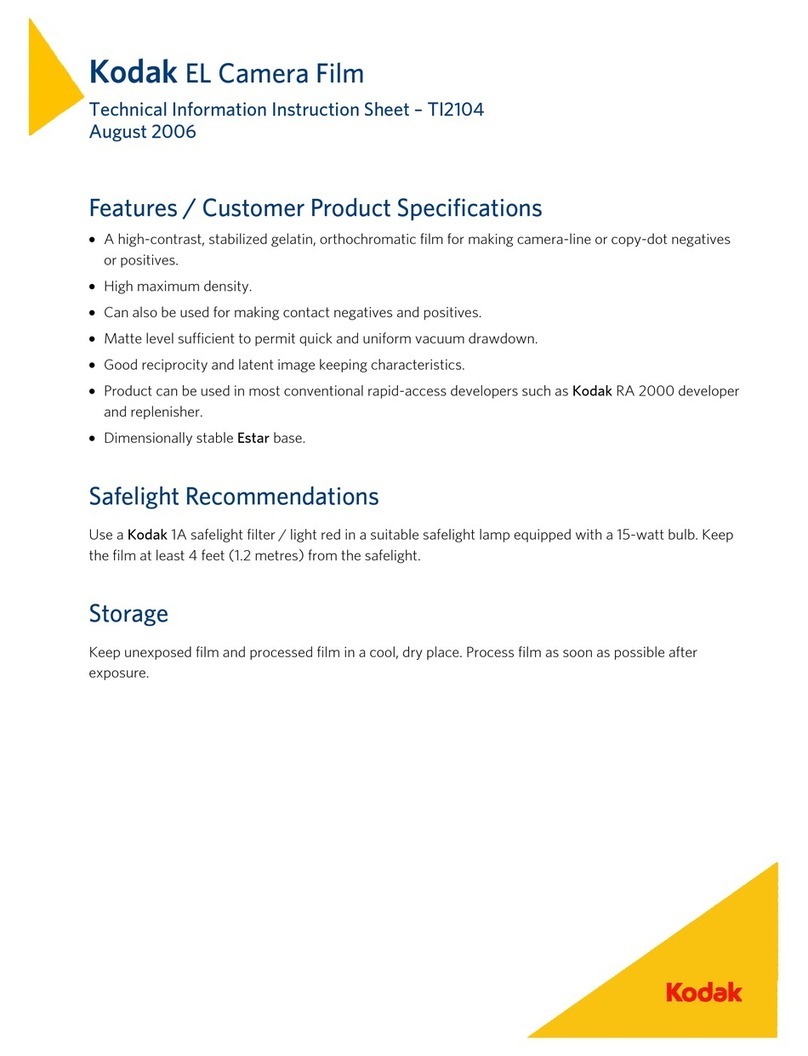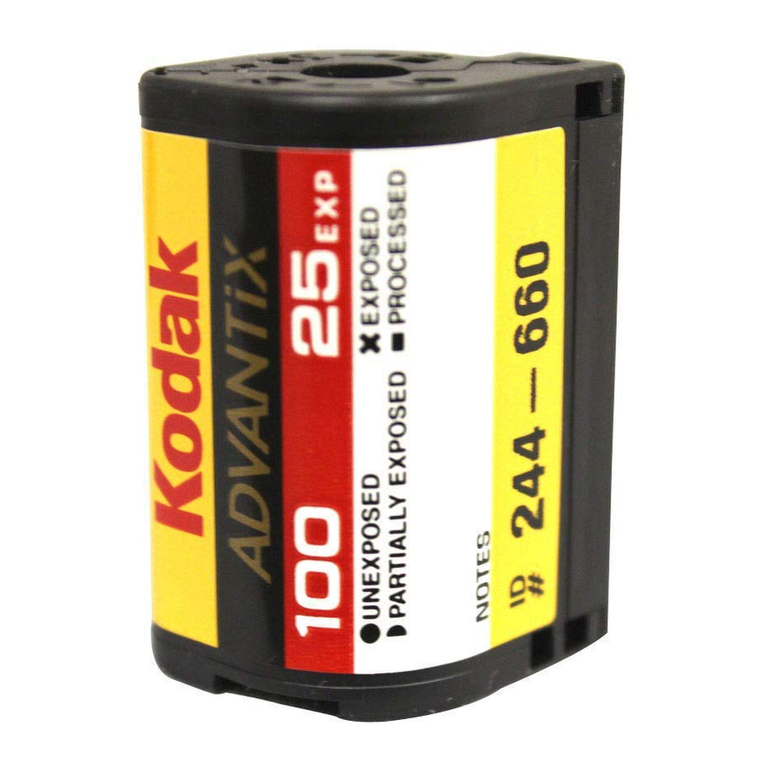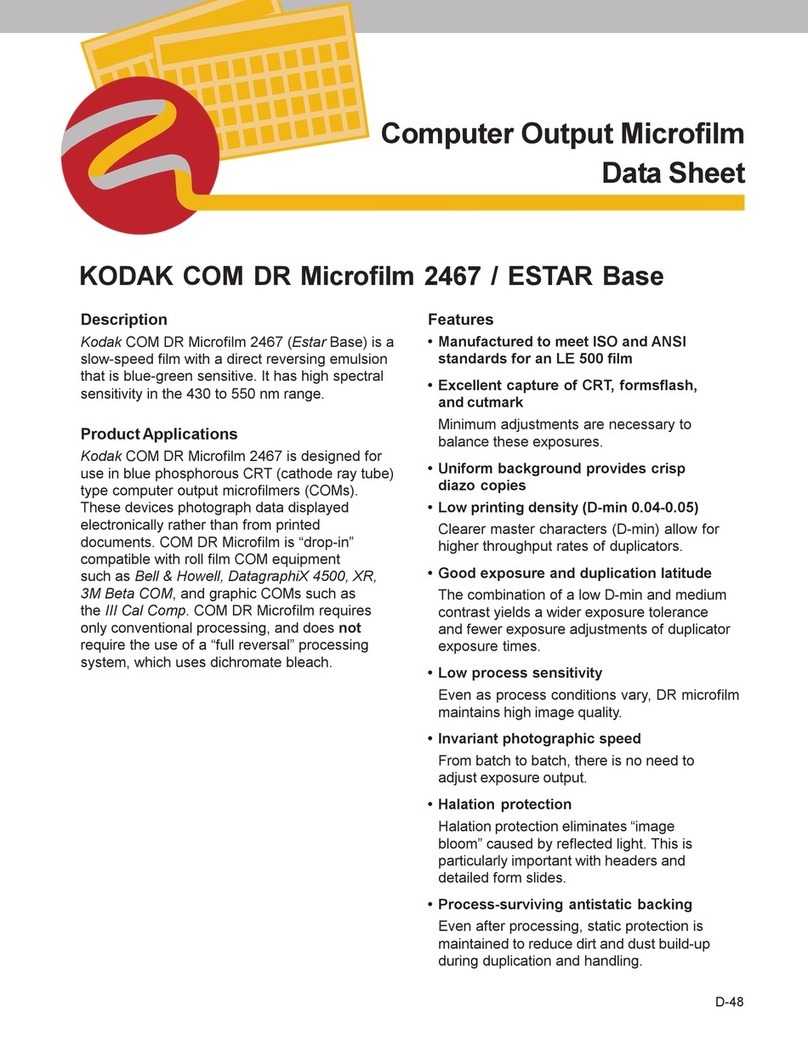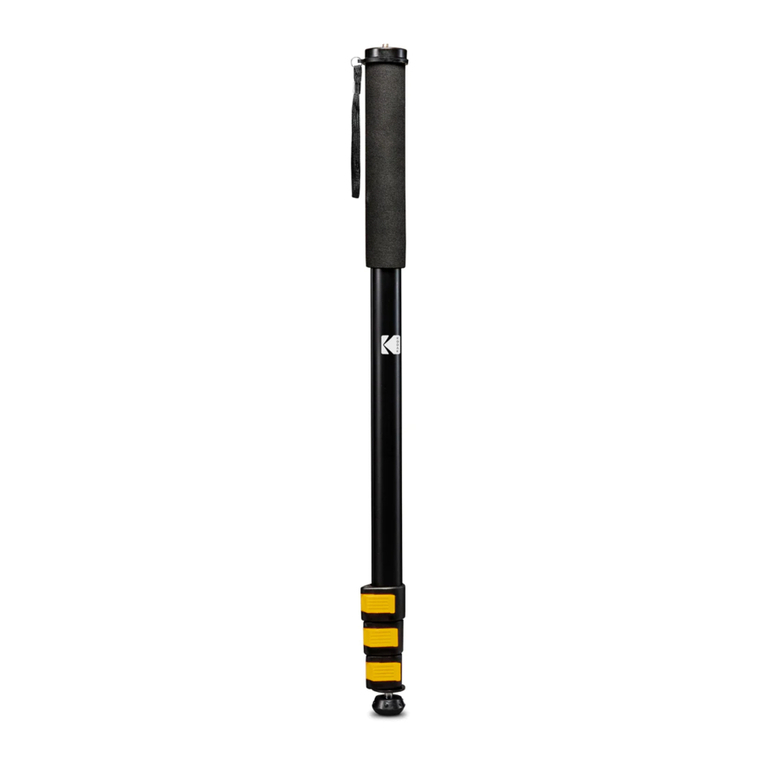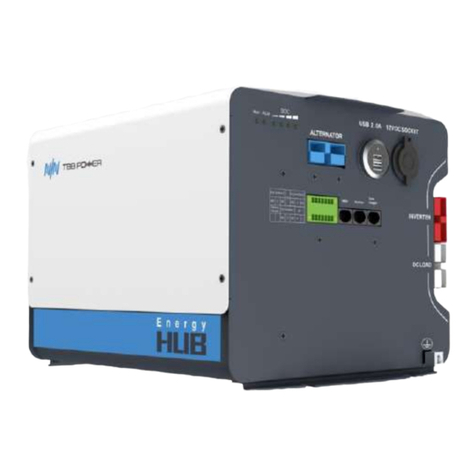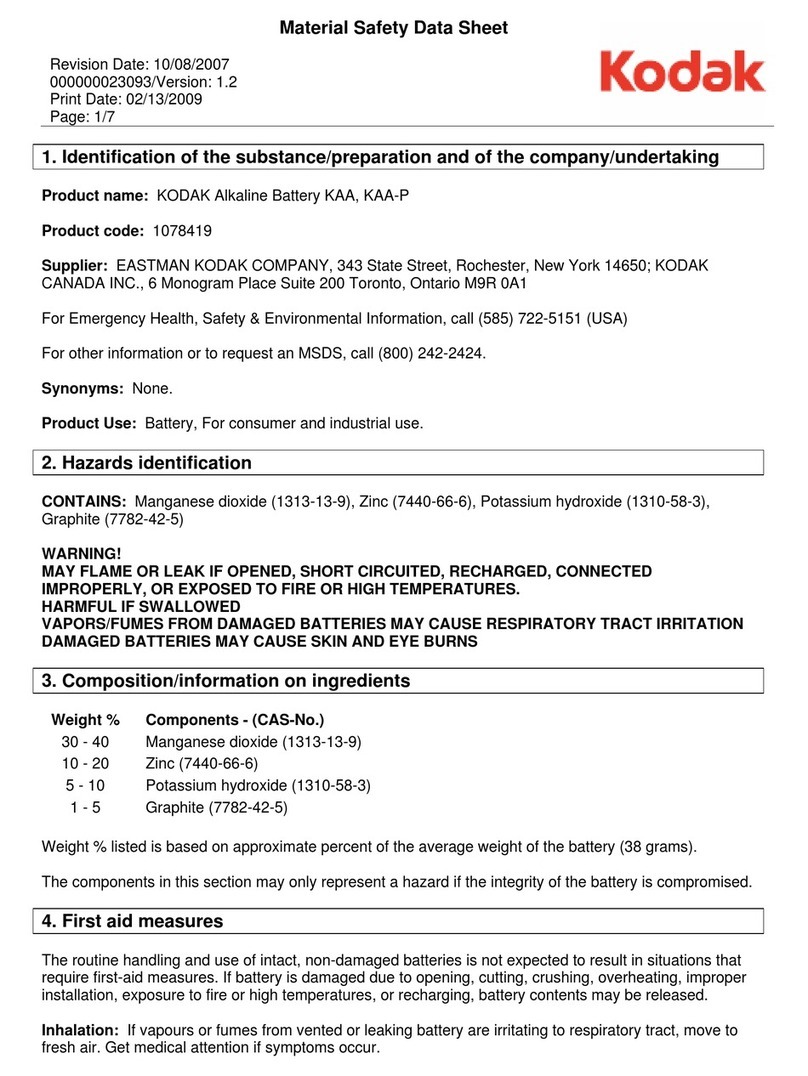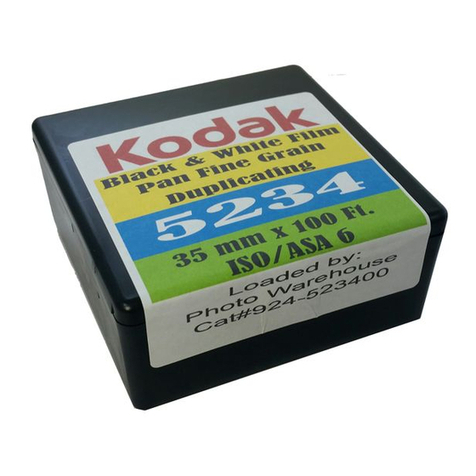
KODAK ROYAL GOLD 25 Film
KODAK ROYAL GOLD 25 Film
KODAK Publication No. E-40
CAT 883 2289
Minor Revision 12-96
Printed in U.S.A.
Consumer Imaging
EASTMAN KODAK COMPANY •ROCHESTER, NY 14650
This publication is printed on recycled paper that contains
50 percent recycled fiber and 10 percent post-consumer material.
JUDGING NEGATIVE EXPOSURE
You can check the exposure level with a suitable electronic
densitometer equipped with a filter such as a KODAK
WRATTEN Gelatin Filter No. 92 or the red filter for
Status M densitometry. Depending on the subject and the
light source used for exposure, a normally exposed and
processed color negative measured through the red filter
should have the approximate densities listed below.
Because of the extreme range in skin color, use these red
density values for a normally lighted forehead only as a
guide. For best results, use a KODAK Gray Card (gray side).
PRINTING NEGATIVES
You can make color prints from negatives by enlarging them
on KODAK EKTACOLOR Papers or KODAK
DURAFLEX® RA Print Material.
Make color transparencies by direct exposure onto
KODAK VERICOLOR Print Film, KODAK VERICOLOR
Slide Film, or KODAK DURATRANS® RA or KODAK
DURACLEAR™ RA Display Material.
Make black-and-white prints on KODAK PANALURE
Papers for conventional black-and-white processing, or
KODAK EKTAMAX RA Professional Papers for
Process RA-4.
Area Measured Density
Reading
The
KODAK Gray Card
(gray side), receiving
the same illumination as the subject 0.75 to 0.95
The lightest step (darkest in negative) of a
KODAK Paper Gray Scale
receiving the
same illumination as the subject 1.10 to 1.30
The highest diffuse density on a normally
lighted forehead
—light complexion
—dark complexion 1.00 to 1.30
0.85 to 1.20
MORE INFORMATION
Kodak has many publications to assist you with information
on Kodak products, equipment, and methods. The following
publications are available from dealers who sell Kodak
products,oryou can orderthemdirectly from Kodakthrough
the order form in KODAK Publication No. L-1, KODAK
Index to Photographic Information. To obtain a copy of L-1,
send your request with $1 to Eastman Kodak Company,
Department 412-L, Rochester, New York 14650-0532.
Note: The Kodak materials described in this publication for
use with KODAK ROYAL GOLD 25 Film are available
from dealers who supply Kodak products. You can use other
materials, but you may not obtain similar results.
E-30 Storage and Care of KODAK Photographic
Materials—Before and After Processing
E-41 KODAK ROYAL GOLD 100 Film
E-42 KODAK ROYAL GOLD 200 Film
E-43 KODAK ROYAL GOLD 400 Film
E-44 KODAK ROYAL GOLD 1000 Film
Z-131 Using KODAK FLEXICOLOR Chemicals
Kodak Information Center’s
Faxback System
—Available 24 hours a day, 7 days a week—
Many technical support publications for Kodak
products can be sent to your fax machine
from the Kodak Information Center. Call:
U.S.A.1-800-242-2424, Ext. 33
Canada 1-800-295-5531
If you have questions about Kodak products, call Kodak.
In the U.S.A.:
1-800-242-2424, Monday–Friday
8 a.m.–8 p.m. (Eastern time)
In Canada:
1-800-465-6325, Monday–Friday
8 a.m.–5 p.m. (Eastern time)
Or contact Kodak on-line at:
http://www.kodak.com/
Kodak, T-Grain, Flexicolor, Vericolor, Ektapress, Gold, Royal Gold,
Ektar, Wratten, Ektacolor, Duraflex, Duratrans, Duraclear, Panalure, and
Ektamax are trademarks.
